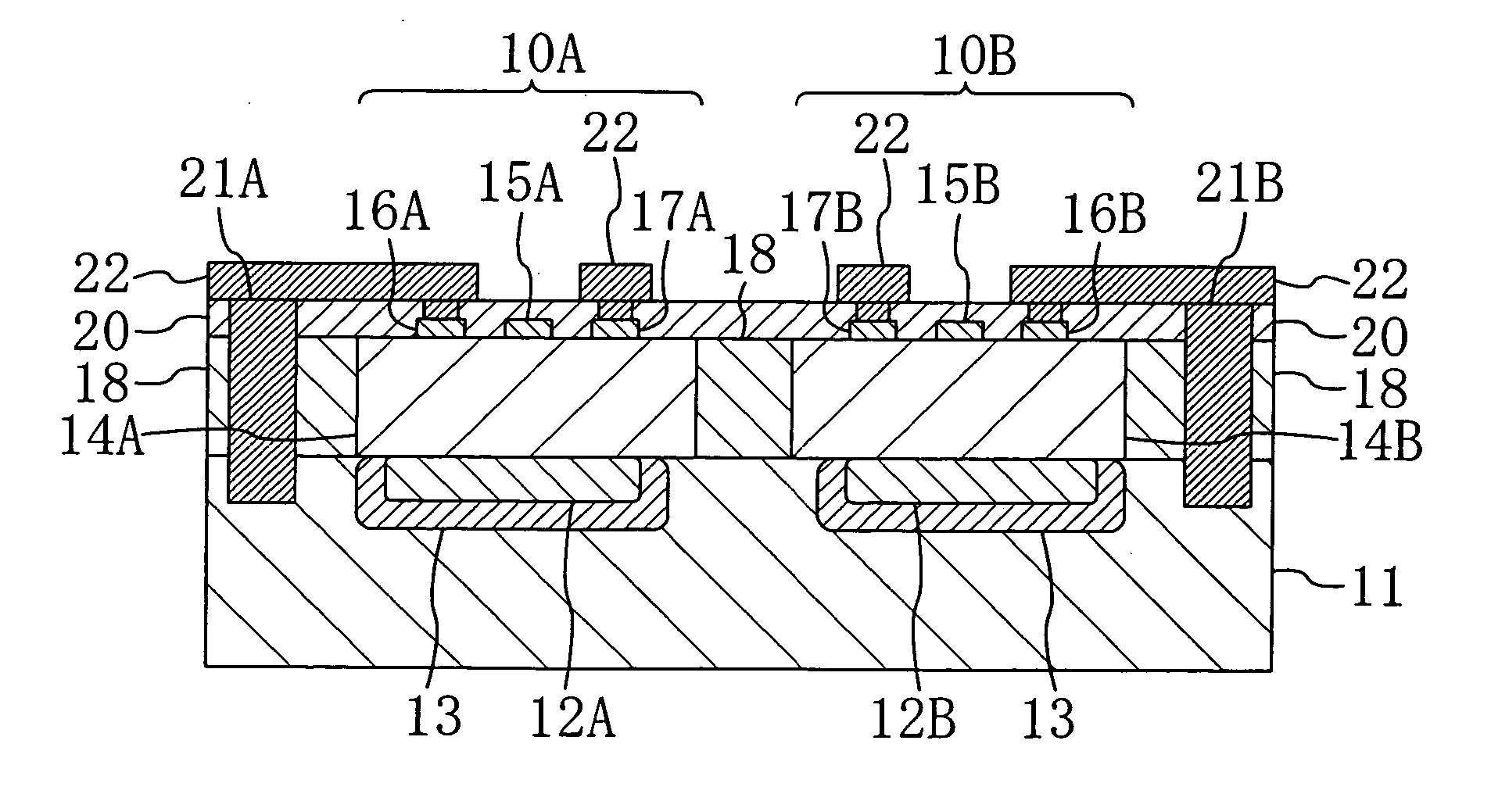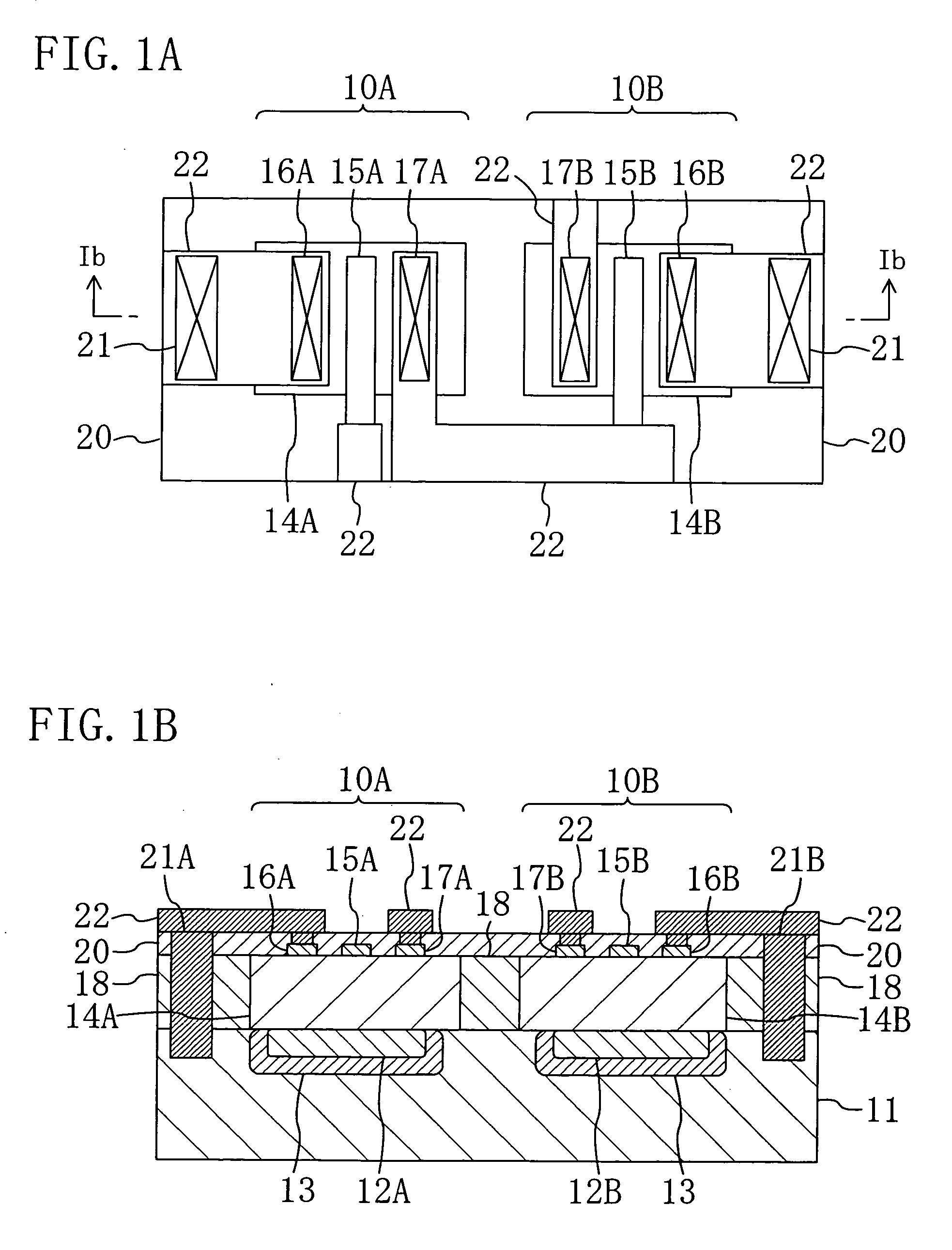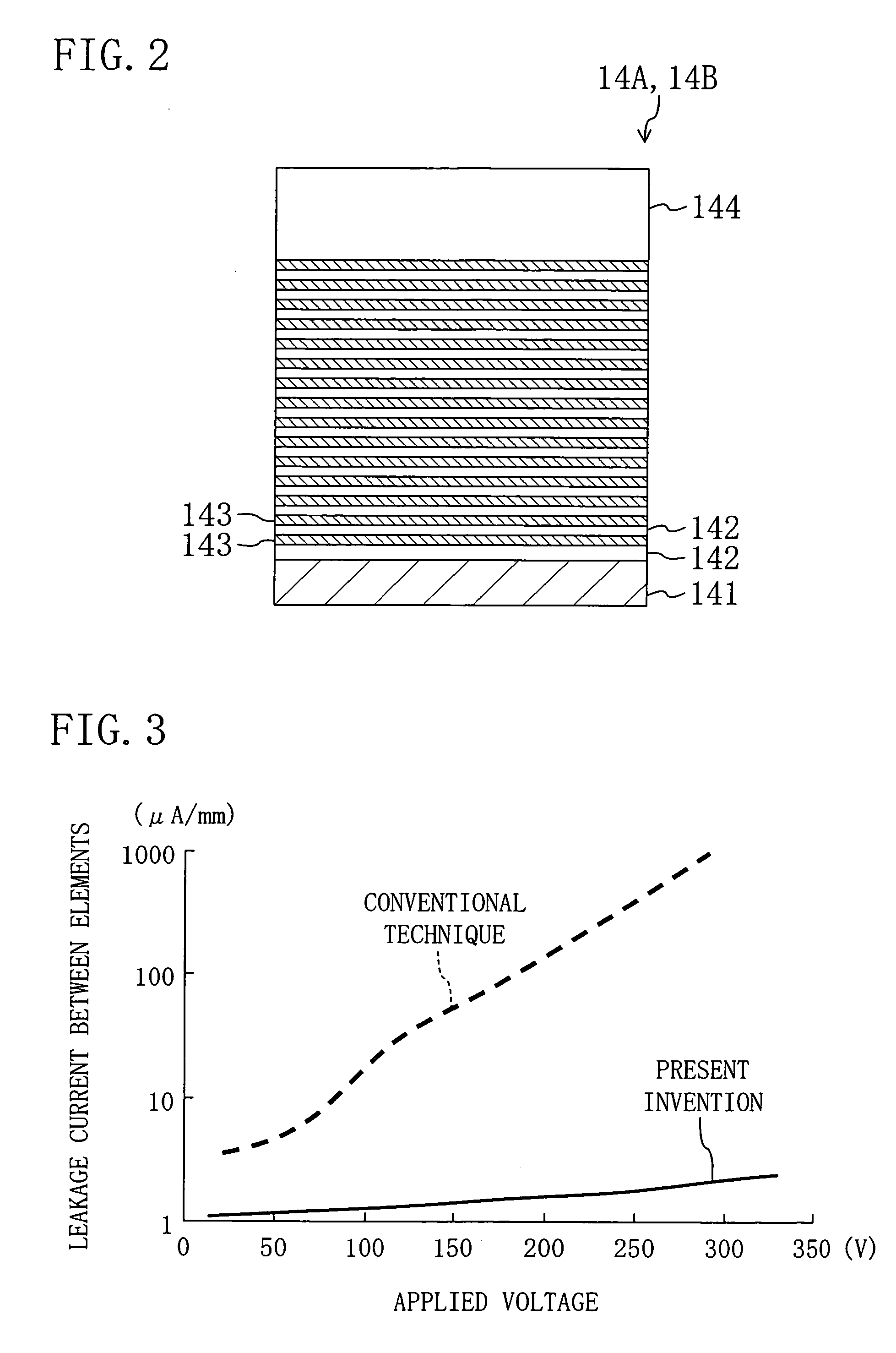Semiconductor device and method for fabricating the same
a semiconductor and semiconductor technology, applied in the field of semiconductor devices, can solve the problems of difficulty in electrically connecting or integrating a plurality of elements (hfets) formed on one semiconductor substrate, and achieve the effects of reducing interconnect resistance, higher voltage, and reducing interconnect resistan
- Summary
- Abstract
- Description
- Claims
- Application Information
AI Technical Summary
Benefits of technology
Problems solved by technology
Method used
Image
Examples
embodiment 1
[0042] Embodiment 1 of the invention will now be described with reference to the accompanying drawings.
[0043]FIGS. 1A and 1B show a semiconductor device of Embodiment 1 in which two high power HFETs are integrated, and specifically, FIG. 1A is a plan view thereof and FIG. 1B is a cross-sectional view thereof taken on line Ib-Ib of FIG. 1A.
[0044] As shown in FIG. 1B, a first polarity inversion region 12A and a second polarity inversion region 12B both of p-type conductivity spaced from each other are selectively formed in an upper portion of a semiconductor substrate 11 of, for example, n-type silicon (Si). The bottoms and the side faces of the polarity inversion regions 12A and 12B are covered with a p-type low concentration impurity region 13 including a p-type impurity in a lower concentration than in the polarity inversion regions 12A and 12B. Since the p-type low concentration impurity region 13 is thus provided, a larger depletion layer extends in the semiconductor substrate ...
embodiment 2
[0063] Embodiment 2 of the invention will now be described with reference to the accompanying drawings.
[0064]FIG. 7 is a cross-sectional view of a semiconductor device of Embodiment 2 in which two high power HFETs are integrated. The plan structure of this semiconductor device is similar to that of Embodiment 1 shown in FIG. 1B. Also, like reference numerals are used in FIG. 7 to refer like elements shown in FIG. 1 and the description is omitted.
[0065] In Embodiment 1, the semiconductor substrate 11 of n-type silicon is used as the substrate on which the group III-V nitride semiconductor layer 14 is epitaxially grown.
[0066] In contrast, an n-type SOI substrate 31 including an n-type upper silicon layer 30a, a buried oxide layer 30b and an n-type lower silicon layer 30c is used in Embodiment 2 as shown in FIG. 7.
[0067] Specifically, the SOI substrate 31 includes the n-type upper silicon layer 30a with a thickness of 0.2 μm, the buried oxide layer 30b of silicon oxide with a thick...
PUM
 Login to View More
Login to View More Abstract
Description
Claims
Application Information
 Login to View More
Login to View More - R&D
- Intellectual Property
- Life Sciences
- Materials
- Tech Scout
- Unparalleled Data Quality
- Higher Quality Content
- 60% Fewer Hallucinations
Browse by: Latest US Patents, China's latest patents, Technical Efficacy Thesaurus, Application Domain, Technology Topic, Popular Technical Reports.
© 2025 PatSnap. All rights reserved.Legal|Privacy policy|Modern Slavery Act Transparency Statement|Sitemap|About US| Contact US: help@patsnap.com



